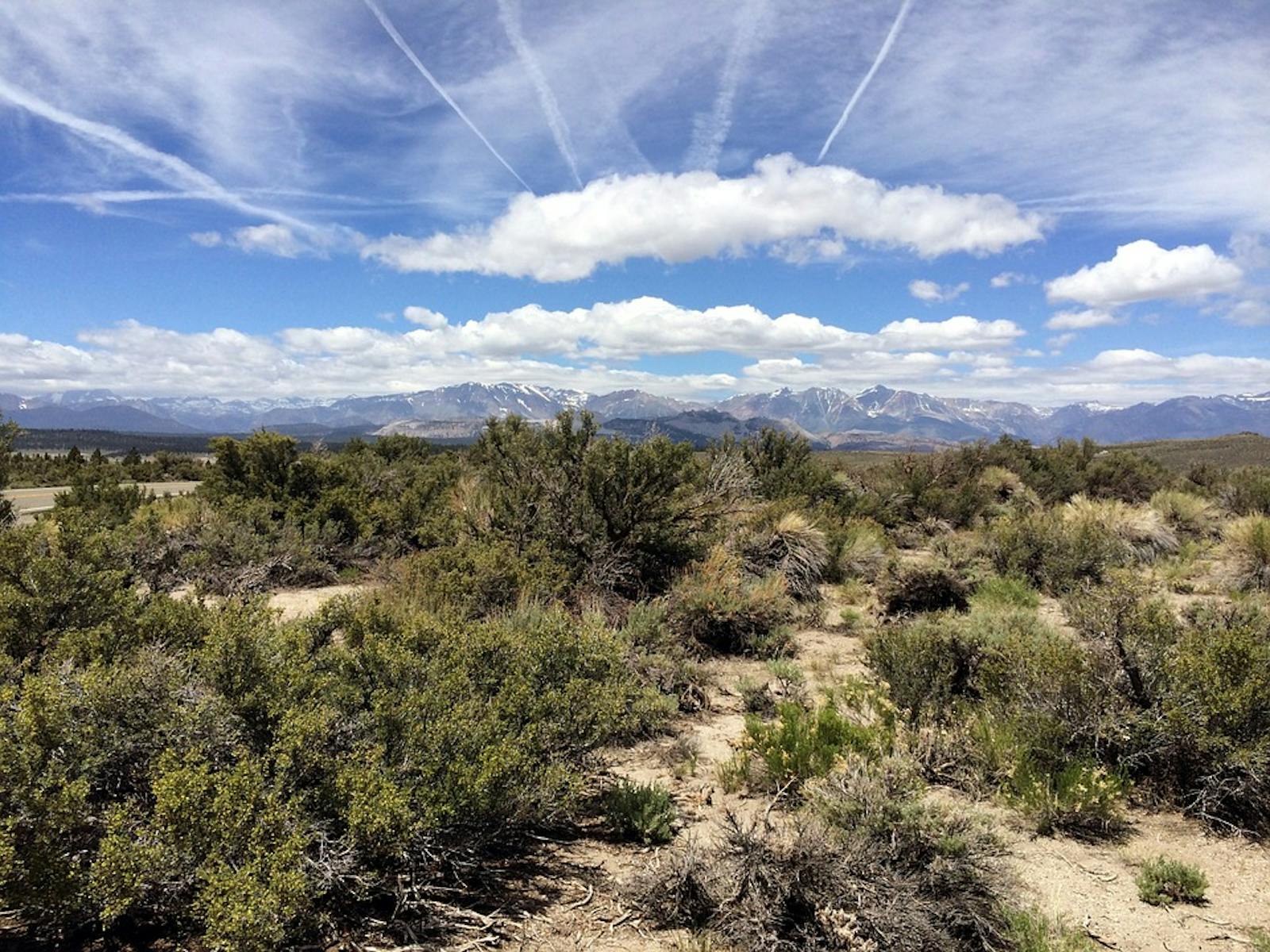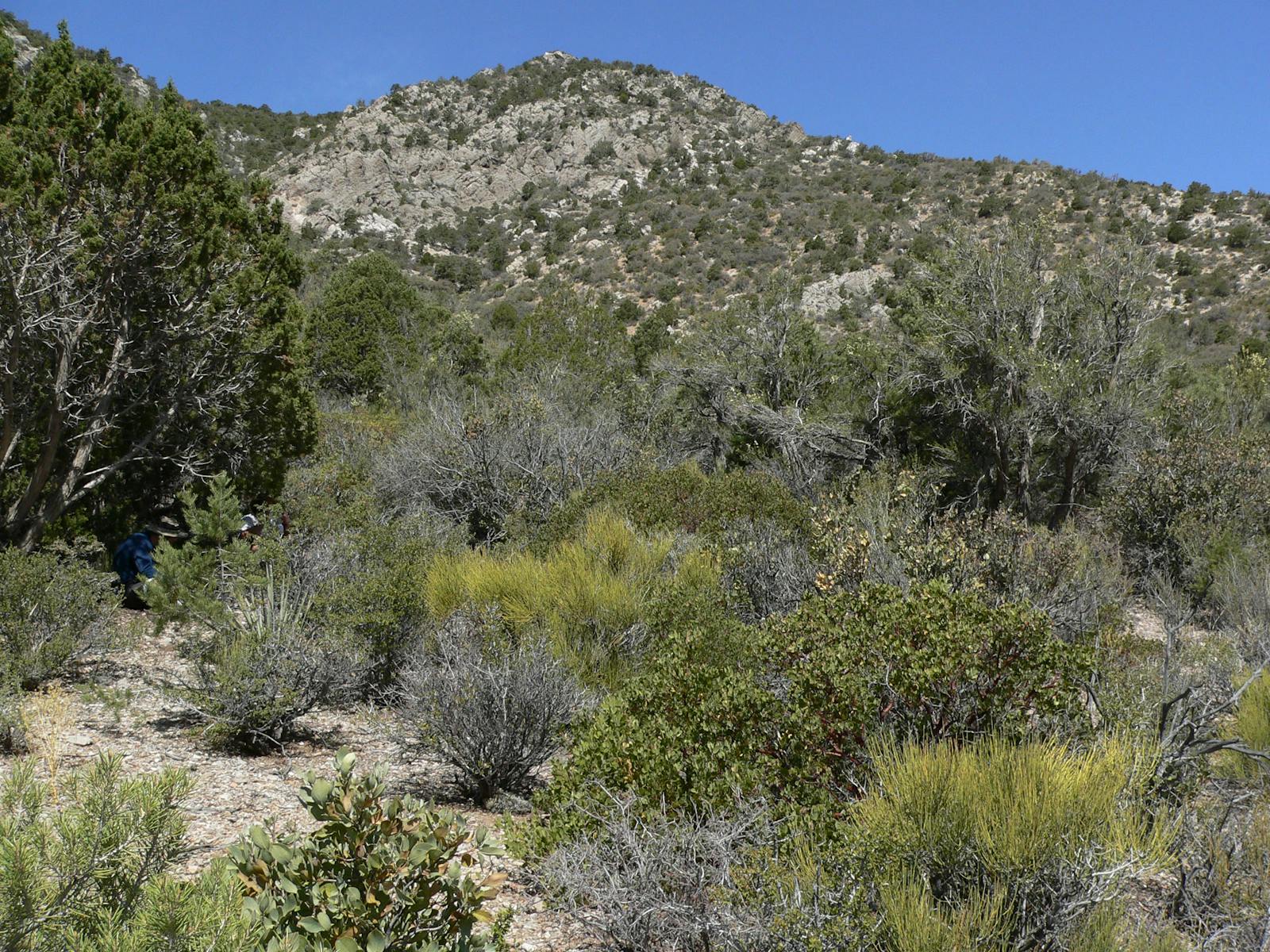Great Basin Shrub Steppe
The ecoregion’s land area is provided in units of 1,000 hectares. The conservation target is the Global Safety Net (GSN1) area for the given ecoregion. The protection level indicates the percentage of the GSN goal that is currently protected on a scale of 0-10. N/A means data is not available at this time.
Bioregion: Great Basin & Columbia Steppe (NA18)
Realm: Northern America
Ecoregion Size (1000 ha):
30,127
Ecoregion ID:
430
Conservation Target:
86%
Protection Level:
1
States: United States: NV, UT, CA, ID
The Great Basin is one of the most remote and wild regions of temperate North America. As defined here, this huge ecoregion encompasses most of Nevada, nearly half of Utah, and small adjoining areas of California and Idaho. The ecoregion is bounded on the east by Wasatch Mountains, on the west by the Sierra Nevada Range, on the north by the Columbia Plateau, and on the south by the Mojave Desert.
The Great Basin is the most northerly of the four deserts in North America, especially if we include within it much of the Snake-Columbia Shrub Steppe, as is often done. The latter, however, is generally slightly wetter and cooler than the Great Basin Shrub Steppe. The topography of the Great Basin is a series of uplifted fault-block mountains with intervening basins. The mountains are usually forested and fall into another ecoregion: Great Basin Montane Forests.
.jpg)
The flagship species of the Great Basin Shrub Steppe ecoregion is the pronghorn.
There are approximately 100 internally drained basins within the Great Basin. Large lakes within this ecoregion today include Great Salt Lake, Utah Lake, Pyramid Lake, and Mono Lake. These lakes are remnants of giant Pleistocene pluvial (high-precipitation glacial period) lakes, the largest being Lake Lahontan and Lake Bonneville.
The extreme climate of the Great Basin Shrub Steppe is hot in summer and cold in winter. Elko, Nevada, for example, has recorded air temperatures ranging from -42ºC to +42ºC. The ecoregion generally receives less than 250 mm of annual precipitation, concentrated in the winter in the western portion of the region but gradually shifting toward a summer rainfall pattern in the east but with dry and wet seasons less distinct than in other North American deserts.
The dominant native vegetation region-wide is sagebrush, especially big sagebrush. Other cold-temperate shrubs are shad scale saltbush and winter fat. Shrubs with evolutionary ties to warmer climates include rabbitbrush, black brush, and horsebrush. Other shrubs include greasewood and Nevada ephedra. Dominant perennial grasses are blue bunch wheatgrass and Idaho fescue. Pinyon-juniper woodlands are fairly common, and black or narrow-leaf cottonwoods often line watercourses. A biological crust of fungi, lichens, cyanobacteria, mosses, and algae is usually present between clumps of shrubs and grasses and is important for nutrient cycling, soil stability, and other ecological functions.
The reptilian fauna in this ecoregion is diverse, with characteristic lizards including Great Basin collared lizard, Great Basin skink, sagebrush lizard, western fence lizard, desert spiny lizard, zebra-tailed lizard, long-nosed leopard lizard, side-blotched lizard, western whiptail, and desert horned lizard.
Characteristic mammals include pronghorn, mule deer, bighorn sheep, spotted bat, pallid bat, pygmy rabbit, black-tailed jackrabbit, Townsend’s ground-squirrel, Great Basin pocket mouse, coyote, cougar, and five species of kangaroo rats.
.jpg)
Adult Prairie Falcon
Breeding birds in sagebrush include prairie falcon, Swainson’s hawk, ferruginous hawk, greater sage-grouse, burrowing owl, short-eared owl, common poorwill, white-throated swift, Say’s phoebe, loggerhead shrike, horned lark, rock wren, canyon wren, sage thrasher, green-tailed towhee, Brewer’s sparrow, lark sparrow, sage sparrow, black-throated sparrow, and western meadowlark. Fire is an important natural process in the sagebrush steppe, but it was historically infrequent, on the order of 35–100 years or more between fires.
Livestock grazing, fire exclusion, and exotic species invasions have greatly altered the natural fire regime of this ecoregion. Whereas fire exclusion affected many communities historically, the invasion of cheatgrass has made fires unnaturally frequent, killing sagebrush and even native bunchgrasses over large areas. Urban sprawl is affecting a limited area, mostly near Reno, Nevada.
Priority conservation actions for the next decade are 1) establish new protected areas to capture roadless areas and biodiversity hotspots—designate federal Wilderness Study Areas as Wilderness, 2) improve range management and reduce stocking densities of cattle, and 3) control invasive exotic plants, especially cheatgrass, and medusahead, which have invaded much of this ecoregion.
-
-
1. Trimble, S. 1989. The Sagebrush Ocean: A Natural History of the Great Basin. University of Nevada Press, Reno.
2. West, N.E., and J.A. Young. 2000. Intermountain valleys and lower mountain slopes. Pages 255-284 in M.G. Barbour and W.D. Billings, eds. North American Terrestrial Vegetation, 2nd edition. Cambridge University Press, Cambridge, U.K.
3. Ricketts, T.H. et al. 1999. Terrestrial Ecoregions of North America: A Conservation Assessment. Island Press, Washington, D.C. -
Cite this page: Great Basin Shrub Steppe. Ecoregion Snapshots: Descriptive Abstracts of the Terrestrial Ecoregions of the World, 2021. Developed by One Earth and RESOLVE. https://www.oneearth.org/ecoregions/great-basin-shrub-steppe/
-





